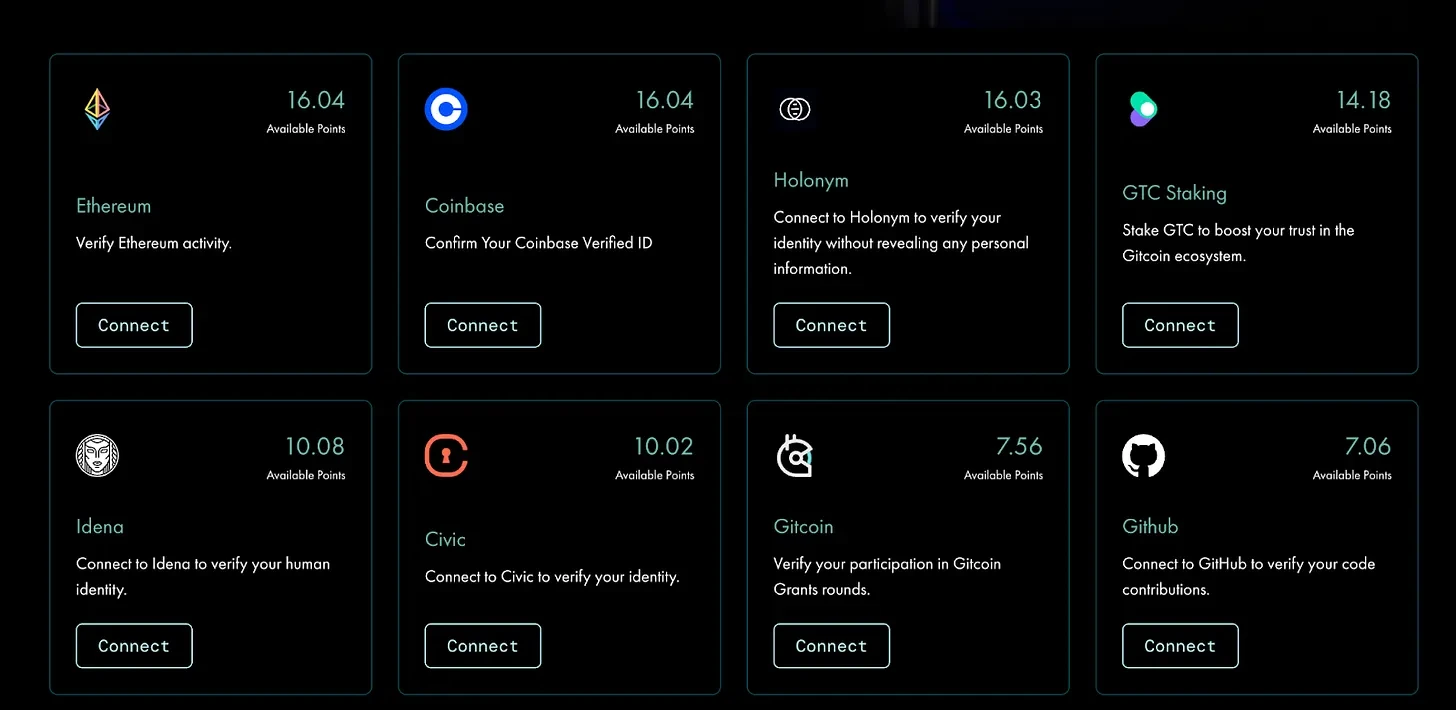اصل مصنف: FRANCESCO
اصل ترجمہ: TechFlow

There has been a lot of discussion about on-chain reputation in recent years. Since 2017, multiple projects have attempted to solve this problem , aiming to empower on-chain users to understand who they are dealing with through a reputation layer. Today, this seems to be more important than ever, with various SocialFi projects and celebrities frequently launching so-called shitcoins. This article introduces the concept of on-chain reputation and its importance, focusing on projects that are researching this field, such as Debank and Ethos Network.
On-chain reputation
On-chain reputation answers a simple question : How do we assess the trustworthiness of the people we interact with in a decentralized system?
In centralized systems, a third party typically ensures this reputation (e.g., credit score, Interpol Red Notice, bank account).
Is there a way to replicate this kind of reputation guarantee in a distributed system?
These efforts are not limited to a single protocol, but rather innovate across the space. In order to be applicable, such reputation systems must transcend a single protocol and create a unique set of standards that can be recognized on Web2 and Web3 platforms, establishing a common framework for cross-chain reputation.
Any attempt not to become the new standard would render the process meaningless.
According to a16z, “to democratize decentralized identity, we first have to build systems that map people’s relevant off-chain experiences and associations on-chain,” then “we must build mechanisms to standardize, process, and prioritize the data streams that will be added to the chain” and “address the inherent challenges of decentralized identity, including the lack of context for on-chain records and problems accessing the decentralized network.”
فی الحال، even block explorers only record very basic inputs . Without the additional context of a transaction, it will be more difficult to map it and assign a reputation score.
For example, an NFT received as part of an exchange should have a different weight than an NFT received for an outstanding community contribution to a project.
Furthermore, in crypto, reputation comes in many forms , such as protocol trust, lending credit scores, and the track record of project founders.
Only after all of these factors are taken into account, the system becomes applicable to many use cases, factoring on-chain reputation into “off-line activities” based on the publicly queryable nature of decentralized identities.
Three steps:
-
Recording data on the chain
-
Map and interpret data
-
Convert to reputation score
A truly standardized reputation
In their Request for Builders , the Base team outlined how they view on-chain reputation as fundamental to success. They liken “on-chain” to the next “online,” with reputation playing a major role in every on-chain account.
In this context, a “reputation protocol” could create more trust on-chain. They hypothesize that this could be similar to FICO (the most well-known name for credit scores) or Google Page Rank scores.
Wallets can implement these standards as a fraud prevention mechanism, warning about risky addresses. We have already seen Rabby take the lead in introducing warnings about new contracts or scam tokens.
Others that have introduced some reputation measures include blockchain analytics firms such as Chainalysis, which is based on on-chain behavior, and DeBank, which created the DeBank Credit Score.
The credit score is a “comprehensive measure of a user’s authenticity, activity, and value.” Higher scores mean more activity and user authenticity , but in its current state, the DeBank credit score does not serve as a proxy for reputation.

Additionally, we can see that much attention has been paid to the importance of formal identity verification, which remains a controversial topic in the crypto space.
An example of a successful reputation mechanism is Gitcoin Passport . Gitcoin Passport calls itself an “authentication aggregation application”.
Just like a regular passport, users can collect stamps by verifying previous activity or completing tasks and verifications from different Web2 and Web3 validators:
-
Holonym (KYC)
-
Civic (biometric)
-
Google and LinkedIn (Web2)
-
Guild and Snapshot (Web3)
These seals increase the default human score , which is a proxy for trustworthiness assigned to each user. Higher human scores provide more opportunities, with a minimum of 20 points required to be considered human.
Here are some examples of stamps that can be collected:

The great thing about Passport is that it preserves user privacy, using a zero-knowledge approach that “creates a verifiable credential that proves a user has performed a specific activity, but without collecting any personally identifiable information.”
Another interesting attempt to create “provably verifiable proofs” is being conducted by the Ethos Network.
Ethos is developing a credibility platform that is integrated into the wider ecosystem, not just a single dApp. The platform can be integrated into existing interfaces (Chrome plugins, Metamask snaps) and dApps.

The blueprint for this new social consensus is similar to proof-of-stake, with users acting as “social validators.”
-
Users can stake people, indicating that they trust them
-
Bad actors can be slashed
-
Social consensus providers can receive rewards
Ethos introduces financial rewards and penalties to ensure:
-
Reputation is protected by financial security, and it becomes expensive to falsify reputation
-
Reputation has value
-
Easier to observe social interactions
At the same time, a balance must be found that reputation cannot simply be bought.
On the Ethos Network, users will be able to:
-
Review: Developing a reputation beyond providing financial collateral
-
Bonding: Similar to staking, users can post their ETH on others and earn staking ETH yield. The person you bond with will receive 10% of the yield to incentivize validators and referrals.
-
Slashing: If validators misbehave, those who have staked ETH to them can make slashing proposals to remove up to 10% of the offender’s staked ETH from the Ethos contract. Those who make rejected slashing proposals are penalized.
-
Proof: reflects authority, reputation, and influence from other sources
All of these mechanisms will be converted into a single credibility score.
While less focused on on-chain reputation, other notable nominations in this area include :
-
Worldcoin: This venture-run giant promises to scan your iris and airdrop some WLD tokens for the inconvenience.
Whether their purpose is noble or utopian is up for debate. Nonetheless, they have achieved human proof through biometric scanning of the user’s iris. While this opens up new avenues of risk, it’s an exciting experiment.
-
ای این ایس : Converts crypto addresses into human-readable names, facilitating “on-chain messaging”
There is a long way to go
Developing a truly standardized and universal on-chain reputation system will be a long and dark road with many challenges.
-
Centralized Solutions : The main challenge is to ensure that all of these systems are truly decentralized and not controlled by a centralized party, such as Worldcoin or Gitcoin Passport.
-
How do we achieve on-chain reputation in a decentralized manner? Anything less than this will make the entire system lose its trustless element.
-
Crypto reputation can be manipulated/bought
-
Privacy must be protected
-
Must go beyond a single wallet attachment and have universal applicability
This implementation will be a joint effort of all participants, wallets, block explorers, dApps, and the network.
Vision with real-world use cases
What is the ultimate vision of on-chain reputation?
Here are some examples and real-world situations where on-chain identity can be helpful:
-
Open CVs : Anyone can assess the reputation of other participants by assigning a single reputation score to each user. In addition, every article, contribution or community participation will be recorded and can be used as proof of reputation.
-
Celebrity tokens : With celebrity tokens becoming a new trend, data on these issuances can be used to determine the trust profile of each celebrity. We have seen many of them commit serial scams. This problem can be partially addressed with a quick risk assessment, showing that users should be cautious with these tokens.
-
Meme Developers : This is the peak period for meme developers. However, many abuse this power to conduct pump and dumps or even outright scams. We have seen some personalities act as serial meme developers, repeatedly scamming. Identifying the deployers of tokens as previous scammers is very useful for risk assessment of users.
-
KOL Dumping : A big part of crypto Twitter is KOLs peddling their bags while dumping their followers. Imagine if you could rank the reputation of your favorite KOLs, or just know who are outright dumpers and scammers.
-
Loyalty Programs : Developing on-chain reputation systems will allow dApps to have deeper information about user interactions, creating customized programs specifically for high-quality interactions, providing high-value rewards to the protocol.
Other existing reputation tools
In addition to the aforementioned, there are already various tools that contribute to promoting trust and accountability.
Reputation Building and Tracking
-
Collab.Land: This is an NFT gating bot that verifies ownership and DAO contributions.
-
Karma: Visibility of DAO Contributions
-
PNTHN: Tracking DAO Member Reputation
-
SOURC 3: On-chain reputation management platform
Reputation and identity verification
-
Pentacle: Helping users navigate the protocol
-
ONT ID: A framework for decentralized identifiers and verifiable credentials
-
Krebit: Users can prove their identity without revealing their identity, protecting privacy
-
Orange Protocol: A multi-chain reputation system as verifiable credentials
-
OutDID: ZK Proofs for Private Identity Verification
Reputation and governance
-
Metopia: A reputation system for governance
-
Astraly: On-chain reputation and reputation-based token distribution platform
-
Spect: A no-code tool that helps DAO contributors create child DAOs
-
SourceCred: Helps incentivize contributors and rewards high-quality participation
This article is sourced from the internet: Decentralized identity: Can on-chain reputation become an anchor of trust?
Related: TOX: The evolution code of INTO Web3 ecosystem
When people talk about Web3, keywords such as decentralization, autonomy and consensus are always mentioned repeatedly. But behind these grand narratives, we often overlook a more fundamental question: What is driving the continuous evolution of the Web3 ecosystem? The answer may be hidden in those strings of code and tokens. It is precisely with the powerful tool of Token that the Web3 ecosystem can break through the barriers of centralization and release the power of collective wisdom. In this vigorous Token Revolution, the native token of the INTO ecosystem, TOX, has become one of the most dazzling new stars with its unique design philosophy and innovative practice. Governance, collaboration, and consensus: INTO鈥檚 Web3 ecosystem logic In the Web3 world, all valuable contributions can be tokenized. From content creation to resource…







